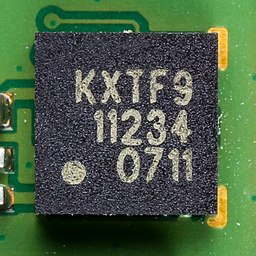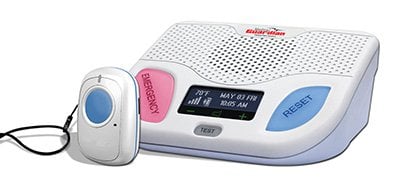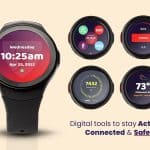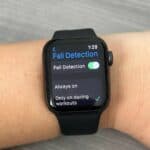From the functionality of medical alert devices to measuring proper acceleration or g-force, one needs an accelerometer. However, this small device doesn’t measure what most people think of as acceleration (an increase in speed). Instead, accelerometer’s measure what scientists consider proper acceleration, or the acceleration of an object relative to inertia or free-fall. One example of how this is different from velocity is that if an accelerometer is placed on the ground, it will actually show a measurement because the Earth has a gravitational pull. Because an accelerometer takes a measurement of an object relative to inertia, it must have some form of object to measure. Therefore, an accelerometer that is released in free fall actually records a measurement of zero, even if it’s being pulled forward by the Earth’s gravity.

There have been a number of different types of accelerometers created over the years. The first device to truly be considered an accelerometer sensor was built in 1923. It was a resistance-bridge-type accelerometer. Five years later, the device was commercialized by Southwark, a U. S.-based company. They later created a two-axis accelerometer. Other versions, including a strain gage accelerometer, a Rochelle salt crystal accelerometer, and a Barium Titanate accelerometer, were later created. Today, three axis accelerometers are incredibly common in electronic devices and can be found in smartphones, tablets, video game controllers, and fall automatic detection devices which are widely used in the medical alert industry.
- Accelerometer Development Timeline – A simple history of the accelerometer.
- The Accelerometer – Wiki’s entry on the device.
- Overview of the Accelerometer – Its history, uses, and more.
- A Beginner’s Guide to Accelerometers – A basic outline of the device.
- What are Accelerometers? – Information from Omega Process Measurement & Control.
Accelerometers in Aircraft and Missiles

Accelerometers are used in a number of different products, including aircraft and missiles. One of the most common uses of accelerometers is to determine the aircraft’s pitch orientation, or its orientation relative to the curve of the Earth. Aircraft have to account for this pitch because the Earth is round—if pilots didn’t correct the plane’s orientation, it would eventually fly into the upper atmosphere and into space (or crash when it got too high).
Accelerometers used in missiles also help correct for pitch orientation and keep the missiles on target. They are also used in model rocketry and in missile tests to determine the apogee, or the highest point the rocket reached before gravity pulls it back down.
Accelerometers are often used in fighter jets to determine how much pressure is being put on the pilots (how many “gees” they are pulling). The more gees, the pilot is pulling, the more difficult it can be to remain conscious. These accelerometers often alert pilots when they’re approaching this point.
- Calculating pitch and roll – How accelerometers help pilots make crucial calculations.
- Accelerometers verses Gyroscopes – How the two are different.
- Accelerometers in Aircraft – How they’re built and their uses.
- A PIGA accelerometer – A special type of accelerometer that’s often used in missiles.
- Trends in Accelerometer Design for Military and Aerospace Applications – An article from Sensor Magazine.
Fall Detection Devices
Accelerometers have many more uses than just in aircraft, of course. They’re used in the home every day in a number of ways and have medical applications. Accelerometers may help save the lives of those who are elderly or who have difficulty standing. These sensitive accelerometers are used in different fall detection devices. They sense when someone has suddenly fallen by determining the change in their velocity and in the direction, they are moving. If the device determines that the values for these two variables fall into the danger category, it will automatically send a fall alert and call for help

What about slow falls? The accelerometer is useful here, too. These senior citizen fall detection devices can actually look at things like how smooth the acceleration is. This helps determine if the person has made a non-linear fall.
If someone falls in their home and is unable to call for help or has lost consciousness, their life could be at risk. Devices like emergency call buttons can help, but if the person is unconscious, they can’t make use of the device. A fall detection device doesn’t require the wearer to do anything—it automatically calls for help if it detects the person has fallen. The fall detection pendant’s sensor can sense falls in as little as two feet, which is important if your loved ones fall off a couch or bed. It is also important to note that automatic fall detection technology does not trigger with sliding movements and that is largely why they are not 100% accurate. Not all fall detection devices are created equal. Read our Medical Guardian reviews to compare.
- Evaluation of Accelerometer-based Fall Detection Algorithms – A scholarly paper on the subject.
- Detecting Human Falls – How 3-axis accelerometers are used.
- Wearable Sensors for Reliable Fall Detection – A Fall Detection Paper from U.C. Berkeley.
- Fall Detection – A Summary of Fall Detection from the University of Dundee, Scotland.
- Fall Detection Systems – Challenges, Issues, and Trends.
Tablet Computers and Cameras

Accelerometers are also used in a number of apps and games. Racing games, for example, may allow players to control the steering of their car by turning the tablet or phone to one side. An accelerometer captures this movement and tells the game how to adjust the movement of the player’s vehicle.
In digital cameras, an accelerometer is used in much the same way: it tells the camera when it should take an image in landscape orientation and when it should use portrait. It also displays the pitch and roll of the camera’s axes, which helps to accurately display the image on the small screen.
- Accelerometers and Smartphones – How the device works in a smartphone.
- Motion Sensing in Clothing? – How smartphone accelerometers could be incorporated into clothing.
- Accelerometers and Device Identity – How accelerometers can be used to identify smartphones.
- Accelerometers – Their uses in different electronics by PC Magazine.
- What does the iPhone accelerometer do? – How the device works in an iPhone.
Conclusion
Smartphones, cameras, video game devices, airplanes, rockets, and fall detection devices are just a few of the many different things that use these tiny little devices. The medical applications alone make accelerometers one of the most important tools in day-to-day health and automatic fall detection. The early pioneers of this technology probably had no idea that it would go on to be something found in so many devices used on a daily basis. Perhaps future technology will make even more use out of this unique item.


